


Henry M. Goodkind
(December 3, 1904 – August 9, 1970) New York City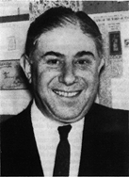
Goodkind was a world-famous collector, expert, judge, writer and editor on aerophilately. He published a number of important books, including United States: The First Air Mail Stamp (1951), United States: The 24c Air Mail Inverted Center of 1918 (1956), United States: RF (République Française) Overprints on Air Mail Stamps and Stationery 1944-1945 (1958) and United States: The 5c Beacon Air Mail Stamp of 1928 (1965).
In 1944, Goodkind
was an advisory editor for the Sanabria Air Mail Catalog and
from 1946 to 1953 edited The Aero Philatelist's News (later
called The Aero Philatelist Annals). During his lifetime
he wrote more than 250 articles on U.S. and foreign air mail stamps.
Goodkind was active in the Collectors Club of New York, editing
The Collectors Club Philatelist from 1949-1970. He served
philately in many ways and received philatelic honors from all over
the world.
Goodkind received the Lichtenstein Medal in 1963 and signed the
Roll of Distinguished Philatelists in 1966.
Delf Norona
(April 14, 1895 – April 12, 1974) West Virginia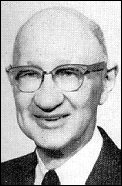
Norona was an outstanding research student of U.S. Postal History, most notably postmarks. He edited the two-volume work, Cyclopedia of United States Postmarks and Postal History (1933, 1935). In 1935 he published his General Catalogue of United States Postmarks. He also wrote many articles on postmarks, stampless covers, western franks and patriotic covers.
Norona was a founder and first president (1935) of the Ohio Valley Stamp Club in Wheeling, West Virginia. He helped organize philatelic exhibitions in the Ohio Valley area and supported organized philately throughout the region. He joined the American Philatelic Congress at its inception and presented a paper at its first meeting in December 1935, “Preparation of Technical Philatelic Articles.”
His interest in postal history was undoubtedly stirred by his interest and work in such organizations as the West Virginia Historical Society, the West Virginia Archeological Society, and the West Virginia Civil War Centennial Commission. He was preparing a multi-volume Encyclopedia of West Virginia at the time of his death.

Dr. Manuel Ma. Risueño
(June 11, 1911 – October 8, 1975) Chile, Argentina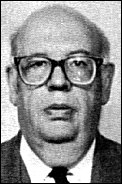
Dr. Risueño was the leading South American Philatelist of his time. He was also a noted collector, expert and international judge. Born in Chile, he was a founder of the Sociedad Filatelica de Chile in 1940, and arranged for the acquisition of Chile Filatelico as its official journal. In 1950 he moved to Argentina, but remained active in Chilean philately.
In Argentina, Dr. Risueño was an active member of the Buenos Aires Philatelic Society and other Argentine stamp clubs. As president of the Buenos Aires Philatelic Society, Risueño also became president of the Federación Argentina Entidades Filatelicas (FAEF). In the 1960s and 1970s he served on the jury of the first five Interamerican Philatelic Exhibitions (EXFILBO 69, EXFILCA 70, EXFILIMA 71, EXFILBRA 72 and EXFILMEX 74.) He also represented Chile and Argentina at international philatelic exhibitions of the period.
At the time of
his death, Dr. Risueño was president of the Federación
Interamericana de Filatelia (FIAF) and was also vice-president
of the Fédération Internationale de Philatélie
(FIP).
Sir John Mitchell Harvey Wilson, Bart., K.C.V.O.
(October 10, 1898 – February 6, 1975) England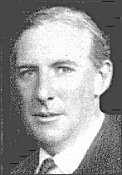
Sir John Wilson was one of Great Britain's most famous philatelists. During a span of over 50 years, he was a leading collector, expert and writer. He served the Royal Philatelic Society London in various officer positions from 1921 onwards, including president (1934-40 and 1949). He was chairman of its Expert committee from 1937 until his death.
He was Chairman of the Centenary Philatelic Exhibition scheduled for London in 1940 but canceled by the onset of World War II. He chaired the London International Philatelic Exhibition of 1950. Wilson succeeded Edward D. Bacon as Keeper of the Royal Philatelic Collection in 1938, and remained Keeper until 1969. He wrote the monumental The Royal Philatelic Collection (1953), a catalog of its contents, for which he received the Crawford Medal in 1953. He received the Lichtenstein Medal in 1956. He served as judge in nearly every international philatelic exhibition from 1922 until his death.

Alfred H. Caspary
(1877 – January 7, 1955) New York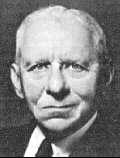
Caspary formed one of the greatest stamp collections in philatelic history. It consisted of world classics of the 19th century, but was particularly noted for its exceptional collection of U.S. Postmaster Provisionals, Carriers and Locals, and Confederate Postmaster Provisionals. Numerous records were set for U.S and foreign rarities when it was sold at auction in 1955-1958 by H.R. Harmer.
Caspary was a founder
and member of the Expert Committee of the Philatelic Foundation.
He also was advisor to the Expert Committee of the Royal Philatelic
Society London. Caspary often made portions of his collection available
for study. He was too ill to travel to England to sign the Roll
of Distinguished Philatelists in 1952. Therefore, in 1954, a copy
of his signature was brought to the Philatelic Congress of Great
Britain by a distinguished group of American philatelists and it
was photographically transferred to the Roll.
James Mensinger Chemi
(February 3, 1912 – March 27, 1976) Arizona
Chemi was a well-known philatelic writer and editor, and one of Arizona's most celebrated philatelists. He was a part-time editor of The American Philatelist for David Lidman from 1960 to 1965, and became its first full-time editor in 1965. He remained as editor of the AP until his death. Chemi wrote Stanley Stearns, U.S. Duck Stamp Designer in 1967.
Chemi was one of the "Committee of Five" who led the APS effort to put the notorious forger Raoul Ch. De Thuin out of business. He was Editor-in-Chief of the book, The Yucatan Affair (1974, reprint 1980) about their successful effort.
Chemi was a founder and president of the APS Writers Unit 30 and served as president of the Phoenix Philatelic Association and the Arizona Society of Topical Collectors. In 1959, he was elected to the Arizona State Philatelic Hall of Fame. In 1964 he received the Luff Award for Exceptional Contributions to Philately.

Alberto Diena
(May 31, 1894 – February 13, 1977) Italy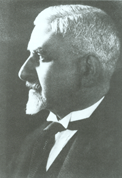
Diena was one of the most highly regarded experts in the world. He was the son of Dr. Emilio Diena, a pioneer philatelist and Italy's first great philatelic student and expert. Alberto's brother Mario and son Enzo were also members of this distinguished philatelic family.
Diena wrote hundreds
of articles on the stamps of Italy, its Colonies and the Italian
States. His special area was the fakes and forgeries of Italy and
the Italian States as well as other countries. His initials, “A.D.,”
and his autograph on a piece or a cover is looked upon with confidence
by students and collectors of Italian philatelic material.
Irwin M. Heiman
(January 2, 1906 – March 5, 1977) New York, California
Heiman
was a well-known auctioneer, holding many specialized sales of
airmail and Mexico collections. He became a dealer in the 1920s,
forming his own company in 1931. Under his name and the Metro
Stamp Co., he held 220 auctions (and a dozen mail sales) from
1931 until 1975.
Among his most important sales were those of Col. E.H.R. Green (four parts), Caroline P. Cromwell, and Col. C.S. Hamilton>. He moved from New York to southern California in 1971, and continued his sales and auctions from that location until his death.
Heiman was an expert
and enthusiast of Mexican philately. Active in the Mexico Elmhurst
Philatelic Society International (MEPSI), he established the Irwin
Heiman Award (now called the Irwin M. Heiman Memorial Award), presented
biannually for the most noteworthy article in the MEPSI journal
Mexicana.
Julius Caesar Morgenthau
(August 2, 1858 – May 22, 1929) New York City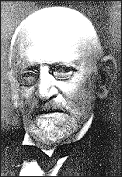
Morgenthau was director of America's foremost auction house from 1905 until his death in 1929. He began as a stamp dealer in Chicago in 1893, but soon moved to New York City. He established J.C. Morgenthau and Co. in 1905 and made it the premier philatelic auction house in the U.S. During the 25 years under Morgenthau's direction, it held the most important stamp auctions of its time.
Most notable were the eleven auction sales of a large part of the world-famous collection of George H. Worthington. Another notable collection sold (in four parts) was that of the French collector, Brunet de l'Argentiére. Both these collections had been purchased privately in 1917 by Alfred F. Lichtenstein who kept portions and turned the rest over to Morgenthau for public sale.
Morgenthau sold many other important collections, notably those of William Wolters and John H. Seybold. Seybold's collection was almost entirely of stamps on cover, one of the first such. For this three-part sale, Morgenthau issued a booklet of photographs, a first in American philately for an auction sale. Over its 25-year lifetime, the firm's sales totalled almost four million dollars - a remarkable record for its time.
“J.C.M.” served the Collectors Club of New York as president, member of the board of governors and trustee. He served on the expert committee of the APS. Morgenthau chaired the board of judges at the 1928 Midwestern Philatelic Exhibition in Cleveland. He was president of the first two international exhibitions held in the U.S. in 1913 and 1926.

Henry Ellis Harris
(January 21, 1902 – December 29, 1977) Boston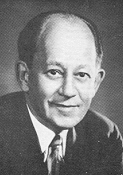
Harris was a pioneer and innovative stamp merchant who built the largest stamp company in the world. He began as a 14-year old, and eventually developed a business that sold billions of stamps to collectors worldwide. Harris advertised extensively in popular non-philatelic magazines as well as philatelic journals throughout the world, promoting both himself and the stamp collecting hobby.
Harris used the radio show, "Ivory Stamp Club of the Air," and its popular host "Captain Tim" Healy to promote his business and the hobby. He supplied albums and stamps to the millions of listeners, thereby increasing the popularity of stamp collecting to the general public.
Harris also successfully promoted the hobby and his own company through his widely distributed booklets containing stories of famous collectors, famous rare stamps, and stamps with unusual human-interest stories. One of his most popular booklets was his The Stamp Finder, which helped novice and general collectors alike identify unusual stamps.
Harris won international applause from the philatelic community for his action in the famous “Thatcher Ferry Bridge” case. His quick action in November 1962 prevented Canal Zone postal officials from flooding the market with deliberate misprints of the October 12, 1962 Canal Zone stamp issued for the opening of the Thatcher Ferry Bridge over the Panama Canal. Several sheets (of Scott No. 157) were accidently printed with the silver ink, and thus the bridge, missing, and one sheet had reached the hands of a stamp collector. U.S. Postmaster General Day took steps to issue "missing bridge" reprints of the Canal Zone stamp to collectors as he had done in the case of the U.S. Dag Hammerskjold "inverted background" stamp (Scott No. 1204, issued October 23, 1962), flooding the market with the error.
With the APS acting
in support, Harris eventually won his law suit against the Canal
Zone government in 1965. He prevented it from reprinting the “missing
bridge” error; the three sheets in its possession were transferred
to government institutions. Harris received the Luff Award in 1966
for Exceptional Contributions to Philately.
Harry L. Lindquist
(August 15, 1884 – January 16, 1978) New York City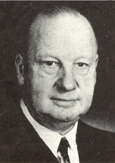
Lindquist was one of America's most acclaimed philatelic editors. He began his editing in 1907 in Chicago with The Collectors Journal. In 1932 he began editing and publishing Stamps, which became the weekly magazine of record during his long ownership.
In 1939 he published the first of the Stamp Specialist series of books. These 20 volumes contained research articles by experts in their fields on U.S., Confederate, and foreign topics. They were published through 1948.
Lindquist founded and was president of the National Federation of Stamp Clubs, comprising 600 national stamp clubs with over 200,000 members. He was a member of the first Postmaster General's Citizens' Stamp Advisory Committee and served on it from 1957 to 1961. For his service, the U.S Post Office Department gave him the Benjamin Franklin Award for Distinguished and Outstanding Public Service.
Lindquist was active
at all levels of philately, and was guest speaker at more banquets
than any other philatelist. Lindquist was made an honorary life
member of the Royal Philatelic Society London. He signed the Roll
of Distinguished Philatelists in 1947. Lindquist received the Luff
Award for Outstanding Service to the APS in 1948.
Dr. Lowell Joseph Ragatz
(July 21, 1897 – October 29, 1978) Columbus, Ohio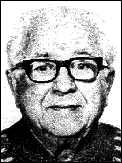
Ragatz reprinted many of the important early works on fakes, forgeries and bogus issues, adding his own comments and clarifications. Among them were Fred Melville's 1923 work, Phantom Philately (1950), Atlee and Pemberton's 1871-1876 The Spud Papers (1952), R.B. Earee's 1882 (with reprints in 1892 and 1906) Album Weeds (1954), Chapier's 1939 Les Timbres de Fantasie (1954) and Bacon's 1899 Reprints of 19th Century Postal Adhesive Stamps and their Characteristics (1954).
He was lauded for his long membership in the Society of Philatelic Americans which he joined in 1910 when it was the Southern Philatelic Association.
Return to Top



